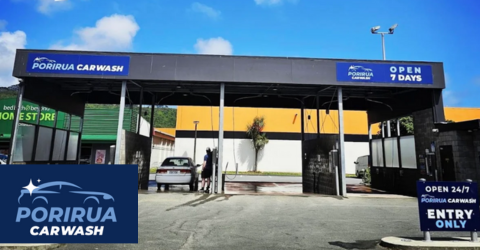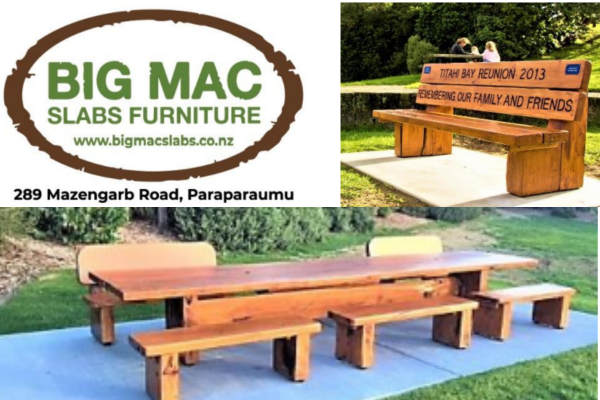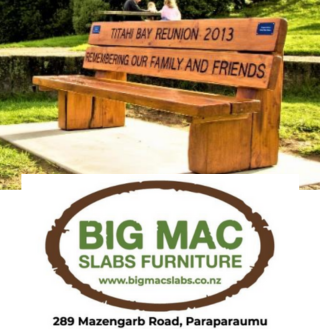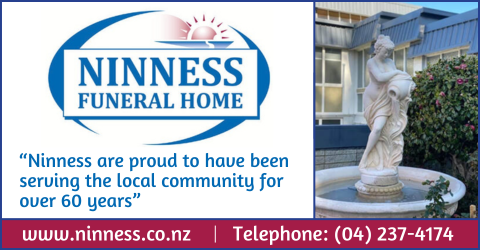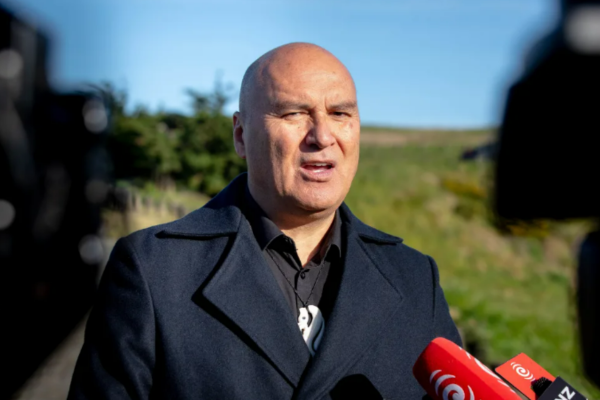
RNZ –

Tuwhenuaroa Natanahira, Māori news journalist
Ngāti Toa Rangatira have gathered near the peak of their sacred maunga, Whitireia, to celebrate its historic return to iwi ownership.
Te Rūnanga o Toa Rangatira has purchased 53 hectares of land at Whitireia – just north of Tītahi Bay – from Radio New Zealand (RNZ) for just under $5 million – adjoining an earlier settlement acquisition on the peninsula.
Ngāti Toa have waited 177 years to get the whenua back. In 1848, the iwi gifted around 202 hectares to the Anglican Church in exchange for the promise of a school to be built for Ngāti Toa tamariki.
The school was never built, but the land remained in church ownership.
That prompted Wiremu Te Kakakura Parata, a Ngāti Toa rangatira and MP, to take court action against the Bishop of Wellington who argued the whenua “ought to be given back to the donors” because the promise of a school was never fulfilled.
In his judgement, Chief Justice James Prendergast ruled that the Treaty of Waitangi was a “simple nullity” signed by “primitive barbarians”. It denied Ngāti Toa ownership of their maunga for decades and set a damaging precedent for other Māori seeking the return of their land.
Kuia Karanga Wineera says it’s “wonderful” to see the maunga finally returned. Photo: RNZ / Mark Papalii.
Ngāti Toa kuia Karanga Wineera, 96, remembers listening to her elders discuss how her people had fought to reclaim Whitireia over the decades.
She told RNZ seeing the maunga finally returned was “wonderful”.
“It’s a most wonderful, wonderful gift to Ngati Toa to have Whitireia come home after so many years of fighting for Whitireia and not getting anywhere, but today, oh, it’s wonderful,” she said.
In the early 1900s Whitireia was vested in the Porirua College Trust Board, allowing the whenua to be sold. In 1935, the New Zealand Broadcasting Service purchased 40 hectares for what would become Radio 2YA, now RNZ.
Photo: RNZ / Mark Papalii.
Iwi members, rūnanga chiefs and representatives from police, the Anglican Church and RNZ attended a formal ceremony to commemorate the sale.
In his speech, Ngāti Toa chair Callum Katene said the deal showed what a “Te Tiriti-centric” New Zealand could look like.
“The birds still sing here at dawn, the same winds sweep the hills and carry the scent of the sea. Beneath us, the earth remembers every footprint, every prayer – Whitireia holds these memories… in this morning, as the first light spills across the harbour, we are reminded that history is not carved in stone, it is living breath,” he said.
“As we look ahead, Whitireia can shine as a beacon of hope, a reminder that reconciliation is not about reclaiming the past so much, but about realising the future envisaged in 1848 – education, faith, unity, and enduring partnership.”
RNZ will continue to lease back 12 hectares of the land to continue AM transmission operations. Photo: RNZ / Mark Papalii.
The rūnanga say all existing leases, easements, and public access agreements have been transferred to them as part of the acquisition and day-to-day operations for tenants, recreational users, and visitors will not change.
They will lease back 12 hectares to RNZ to continue AM transmission operations.
Ngāti Toa Rangatira had a first right of refusal on the property under the Ngāti Toa Rangatira Claims Settlement Act 2014 and Public Works Act.
Speaking to media after the ceremony, Katene said he could not speak highly enough of how “accommodating” RNZ had been during the negotiation process, but admitted there were a few “hiccups”.
“There were a few hiccups when it came to the technical details of the exchanges, there always are in these sorts of things.
“The important distinction for us is this isn’t a financial transaction, it’s not economic for us – it’s returning the land,” he said.
Jim Mather said the RNZ board had responsibilities as governors of assets held in the interest of the public of Aoteaora. Photo: RNZ / Mark Papalii.
Asked why the land could not be gifted back free of charge, RNZ chair Jim Mather said the possibility of gifting the land back was raised during negotiations.
“The return of the land recognised that Ngāti Toa Rangatira had been compensated previously as part of the settlement and were now in a position to actually effect that transaction,” he said.
“If it was up to us as a board we would have handed it over, but we have responsibilities as governors of assets held in the interest of the public of Aotearoa.”
Helmut Modlik said there was a still a “conversation” that should be revisited. Photo: RNZ / Mark Papalii.
Rūnanga chief executive Helmut Modlik said while the negotiations were “principled”, there was still a “conversation” worth “revisiting” at some time.
“As everybody has admitted, the loss of this land was as a result of a breach of the Treaty, and as everybody knows, Treaty settlement processes are a take it or leave it exercise, and we weren’t able to have this whenua returned at that point,” he said.
“To me, that’s a matter of principle that’s worth a future conversation.”
Kahu Ropata said RNZ returning the whenua was a “great step” towards reconciliation. Photo: RNZ / Mark Papalii.
Ngā uri o Wi Parata spokesperson Kahu Ropata said because Wiremu Te Kakakura Parata had had the audacity to take the case up he was discriminated against by the “Pākehā propaganda machine”.
The whānau have had to grow up with that hara (offence) against their tūpuna, he said.
“We grew up with the kōrero that it cost him his health and his wealth fighting this case. And so for many years, we grew up in that, I suppose, for some of my uncles and aunties, in that trauma of a loss of mana, I suppose you could say, and for a rangatira of his ilk, it would have been quite damaging knowing that he was to go to the grave and the case actually not settled in his name.”
Ropata said RNZ returning the whenua was a “great step” towards reconciliation.
“We’re still in discussions with the Anglican Church in terms of the whānau and the iwi about reconciliation and moving forward.
“Fifty-three-odd hectares, there’s still another… 450-odd acres that we still need to reconcile [and we’re] looking at discussions around how we can accomplish that.”


